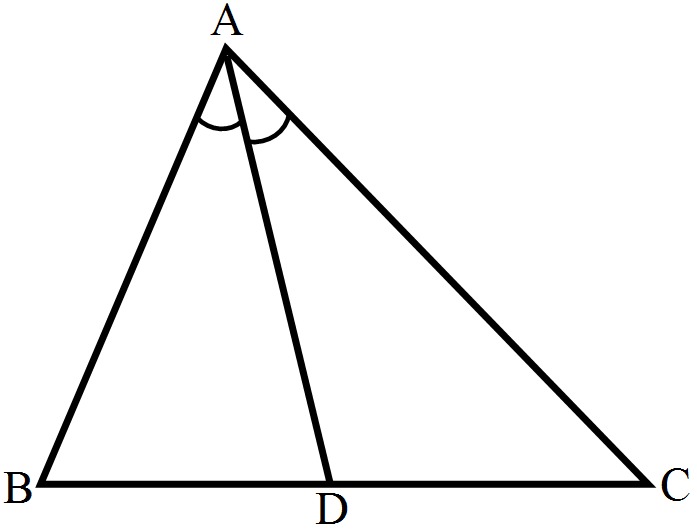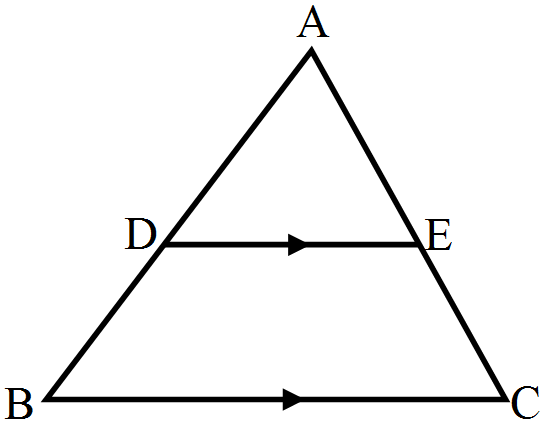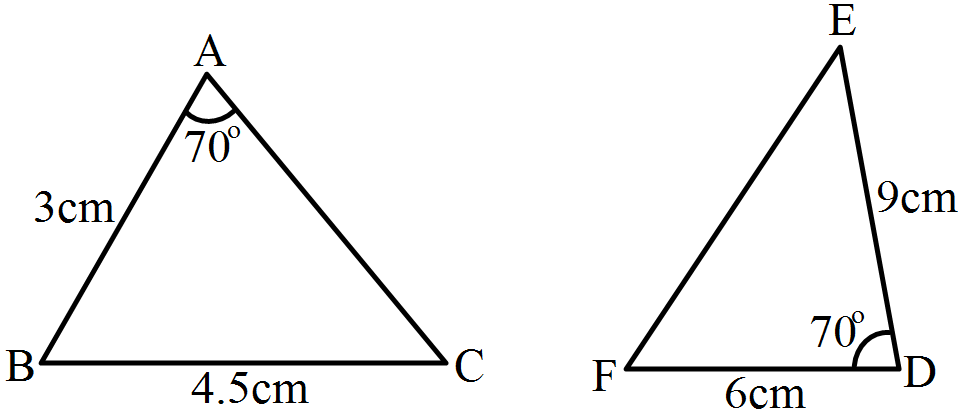In a $\triangle\text{ABC},\text{AD}$ is the bisector of $\angle\text{A}.$
If AB = 5.6cm, AC = 4cm and DC = 3cm, find BC.

If AB = 5.6cm, AC = 4cm and DC = 3cm, find BC.

It is given that AD bisects $\angle\text{A}.$
Applying angle-bisector theorem in $\triangle\text{ABC},$ we get:
$\frac{\text{BD}}{\text{DC}}=\frac{\text{AB}}{\text{AC}}$
$\Rightarrow\frac{\text{BD}}{3}=\frac{5.6}{\text{4}}$
$\Rightarrow\text{BD}=\frac{5.6\times3}{4}$
$\Rightarrow\text{BD}=4.2\text{cm}$
Hence, BC = 3 + 4.2 = 7.2cm
Applying angle-bisector theorem in $\triangle\text{ABC},$ we get:
$\frac{\text{BD}}{\text{DC}}=\frac{\text{AB}}{\text{AC}}$
$\Rightarrow\frac{\text{BD}}{3}=\frac{5.6}{\text{4}}$
$\Rightarrow\text{BD}=\frac{5.6\times3}{4}$
$\Rightarrow\text{BD}=4.2\text{cm}$
Hence, BC = 3 + 4.2 = 7.2cm
Download our appand get started for free
Experience the future of education. Simply download our apps or reach out to us for more information. Let's shape the future of learning together!No signup needed.*
Similar Questions
- 1The corresponding sides of two similar triangles ABC and DEF are BC = 9.1cm and EF = 6.5cm. If the rerimeter of $\triangle\text{DEF}$ is 25cm, find the perimeter of $\triangle\text{ABC}.$View Solution
- 2A man goes $10\ m$ due south and then $24\ m$ due west. How far is he from the starting point?View Solution
- 3D and E are points on the sides AB and AC respectively of a $\triangle\text{ABC}$ such that DE || BC:View Solution
AD = (7x - 4)cm, AE = (5x - 2)cm, DB = (3x + 4)cm and EC = 3x cm.

- 4If the lengths of the sides BC, CA and AB of a $\triangle\text{ABC}$ are a, b and c respectively and AD is the bisectore of $\angle\text{A}$ then find the lengths of BD and DC.View Solution
- 5In $\triangle\text{ABC},$ the bisector of $\angle\text{B}$ meets AC at D. A line PQ || AC meets AB, BC and BD at P, Q and R respectively.View Solution
Show that PR × BQ = QR × BP.

- 6In $\triangle\text{ABC},\text{D}$ is the midpoint of $BC$ and $\text{AE}\perp\text{BC}.$ If $\text{AC}>\text{AB},$ show that.View Solution
$\text{AB}^2=\text{AD}^2-\text{BC}.\text{DE}+\frac{1}{4}\text{BC}^2.$ - 7View SolutionThe sides of certain triangles are given below. Determine them are right triangles:
9cm, 16cm, 18cm. - 8View SolutionIn the given pairs of triangles, find which pair of triangles are similar. State the similarity criterior and write the similarity relation in symbolic from.

- 9View SolutionProve that the ratio of the perimeters of two similar triangles is the same as the ratio of their corresponding sides.
- 10In the given figure, D is the midpoint of side BC and $\text{AE}\perp\text{BC}.$ If BC = a, AC = b, AB = c, ED = x, AD = p and AE = h, prove that.View Solution

$(\text{b}^2-\text{c}^2)=2\text{ax}$
